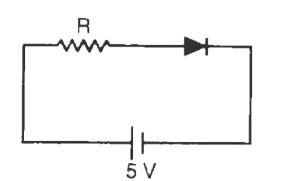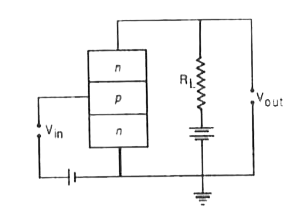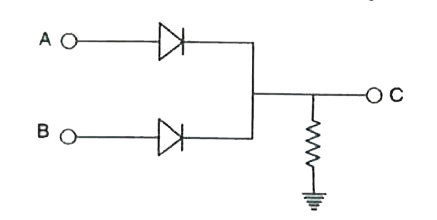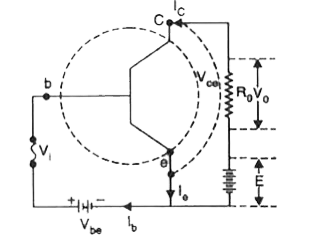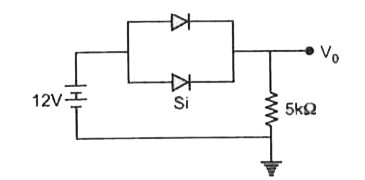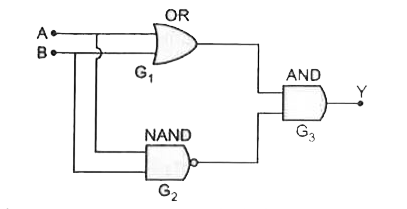Multiple Choice Questions - LEVEL -III (Questions From AIEEE/JEE Examination) from MODERN PUBLICATION PHYSICS (KANNADA ENGLISH) SOLIDS & SEMICONDUCTOR DEVICES for Class 12
| Class 12 | PHYSICS |
| Chapter | SOLIDS & SEMICONDUCTOR DEVICES |
| MODERN PUBLICATION PHYSICS (KANNADA ENGLISH) | Multiple Choice Questions - LEVEL -III (Questions From AIEEE/JEE Examination) |
| Medium | English |
| Academic Year | 2023-2024 |
Question 70
In a triode value for a grid voltage Vg=−1.2V , the phase current Ip and plate voltage Vp are given Ip=(−5+0.1V0),Ip in mAandVp in volt . When grid voltage is changed to - 3.2 V at constant plate voltage of 150 V , a plate current of 5 mA is observed , then
Plate resistance Rp is View SolutionQuestion 71
In a triode value for a grid voltage Vg=−1.2V , the phase current Ip and plate voltage Vp are given Ip=(−5+0.1V0),Ip in mAandVp in volt . When grid voltage is changed to - 3.2 V at constant plate voltage of 150 V , a plate current of 5 mA is observed , then
Tran conductance inductance gm is View SolutionQuestion 72
In a triode value for a grid voltage Vg=−1.2V , the phase current Ip and plate voltage Vp are given Ip=(−5+0.1V0),Ip in mAandVp in volt . When grid voltage is changed to - 3.2 V at constant plate voltage of 150 V , a plate current of 5 mA is observed , then
Amplification factor μ isView SolutionQuestion 73
In a triode value for a grid voltage Vg=−1.2V , the phase current Ip and plate voltage Vp are given Ip=(−5+0.1V0),Ip in mAandVp in volt . When grid voltage is changed to - 3.2 V at constant plate voltage of 150 V , a plate current of 5 mA is observed , then
Voltage amplification for 20kΩ load in plate circuit is View SolutionQuestion 89
A working transistor with its three legs marked , P Q and R is tested using a multimeter . No conduction is found between P and Q . By connecting the common (negative ) terminal of the multimeter to R and the other (positive) terminal to P or Q. some resistance is seen on the multimeter. Which of the following is true for the transistor ? View SolutionQuestion 102
Keeping the grid voltage constant a change in the plate potential of 50 V, changes the plate current by 10 mA. And keeping the plate potential constant a change in the grid potential of 2V changes the plate current by 10 ma again , the amplification factor of the triode will be : View SolutionQuestion 104
Two junction diodes one of germanium (Ge) and other of silicon (Si) are connected as shown in fig to a battery of e.m.f. 12 V and a load resistance 10kΩ The germanium diode conducts at 0.3V and silicon diode at 0.7 V When a current flows in the circuit , the potential of terminal Y will be :
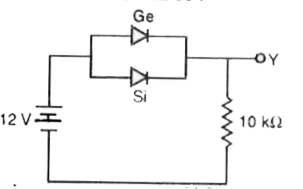 View Solution
View SolutionQuestion 122
The junction diode in the following circuit requires a minimum current of 1 mA to be above the knee point (0.7V) of its 1-V characteristic curve . The voltage across the diode is independent of current above the knee point . If VB=5V , then the maximum value of R so that the voltage is above the knee point will be
 View Solution
View SolutionQuestion 128
A potential difference of 2V is applied between the opposite faces of a Ge crystal of area 1cm2 and thickness 0.5 mm . If the concentration of electrons in Ge is 2×1019/m3 and mobilities of electrons and holes are 0.36m2volt−sand0.14m2volt−s respectively , then the current flowing through the plate will be View SolutionQuestion 155
The current voltage relation of diode is given by I=(e1000V/T−1) mA , where the applied voltage V is in volts and the temperature T is in degree Kelvin . If a student makes an error measuring ±0.01 V while measuring the current of 5 mA at 300K, what will be the error in the error in the value of current in mA ?View Solution
